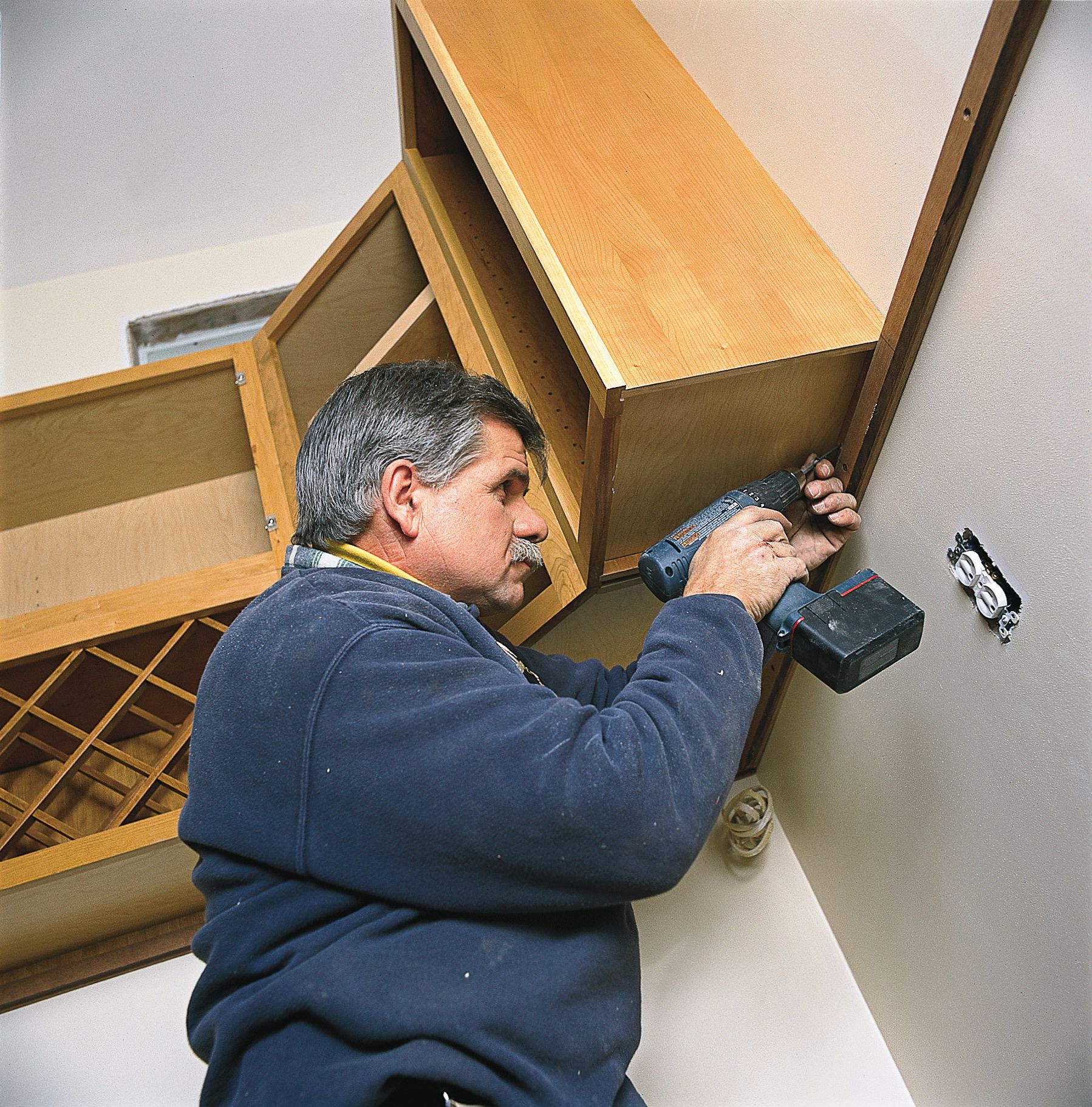Project details
Skill
Cost
Estimated Time
Installing kitchen cabinets is a foundational step in any kitchen renovation project. While it may seem daunting, with the right tools, preparation, and knowledge, you can successfully hang your kitchen cabinets and transform your space. This guide will walk you through the process, from planning to final adjustments.
Preparation
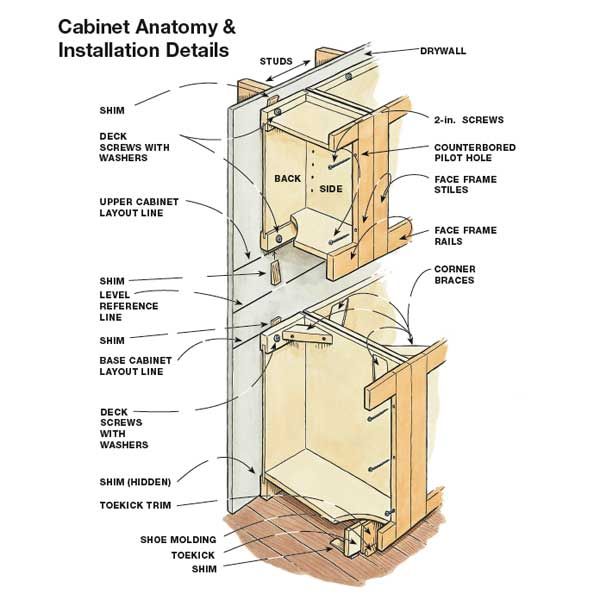
Before diving into the installation process, you need to prepare by planning ahead, buying your cabinets, and getting the necessary tools and materials.
Planning Ahead
Prepare for your kitchen cabinet installation by doing the following:
- Install wood flooring before hanging cabinets to simplify the process.
- Check walls and corners for plumb, square, and straightness using a level, framing square, and straight two-by-four.
- Install electrical lines for appliances and outlets according to code requirements.
- Rough in supply and drain lines for plumbing fixtures.
- Account for appliance placements and any custom cabinet requirements.
Starting with these foundational tasks helps make the installation process smoother, and you’ll encounter fewer surprises along the way.
Tools and Materials
Having the right tools on hand will make your cabinet installation smoother and more efficient. You’ll need the following:
- Block plane
- Bubble level
- Chalk line
- Cordless drill/driver
- Framing square
- Hammer
- Ladder
- Tape measure
- Utility knife
 Cordless drill/driver
Cordless drill/driver 4-in-1 screwdriver
4-in-1 screwdriver Hammer
Hammer Chalk line
Chalk line Tape measure
Tape measure Folding rule
Folding rule Bubble level
Bubble level Block plane
Block plane Compass
Compass Utility knife
Utility knife chisel
chisel Framing square
Framing square Ladder
Ladder
Additionally, you’ll need various screws, shims, and mounting hardware specific to your cabinet system. Tools for fine-tuning, such as cabinet clamps and a stud finder, can also be incredibly beneficial.
Mark the Reference Line

Establishing a level reference line helps you align and install your cabinets correctly. This step sets the foundation for the entire installation process. Here’s how to mark the reference line:
- Use a level to mark a horizontal line approximately 48 inches above the floor around the room.
- Snap a chalk line at these marks to create a continuous reference line.
- Measure from this line down to the floor in several locations to identify the highest point of the floor.
Mark the High Point Layout Line

Once you’ve identified the floor’s high point, you can establish the layout lines for the base and upper cabinets. Take time with these measurements to prevent misalignment that could complicate the installation process. Follow these steps:
- Mark the height of your base cabinets (typically 34 inches) above the floor at the high point.
- Extend a level layout line along the walls from this mark for the top of the base cabinets.
- Measure 17 to 18 inches up from the base cabinet line to mark the bottom of the upper cabinets.
- Snap a level chalk line for the upper cabinets.
- Locate and mark studs along both layout lines.
- Mark out locations for all appliances.
Join the Upper Cabinets
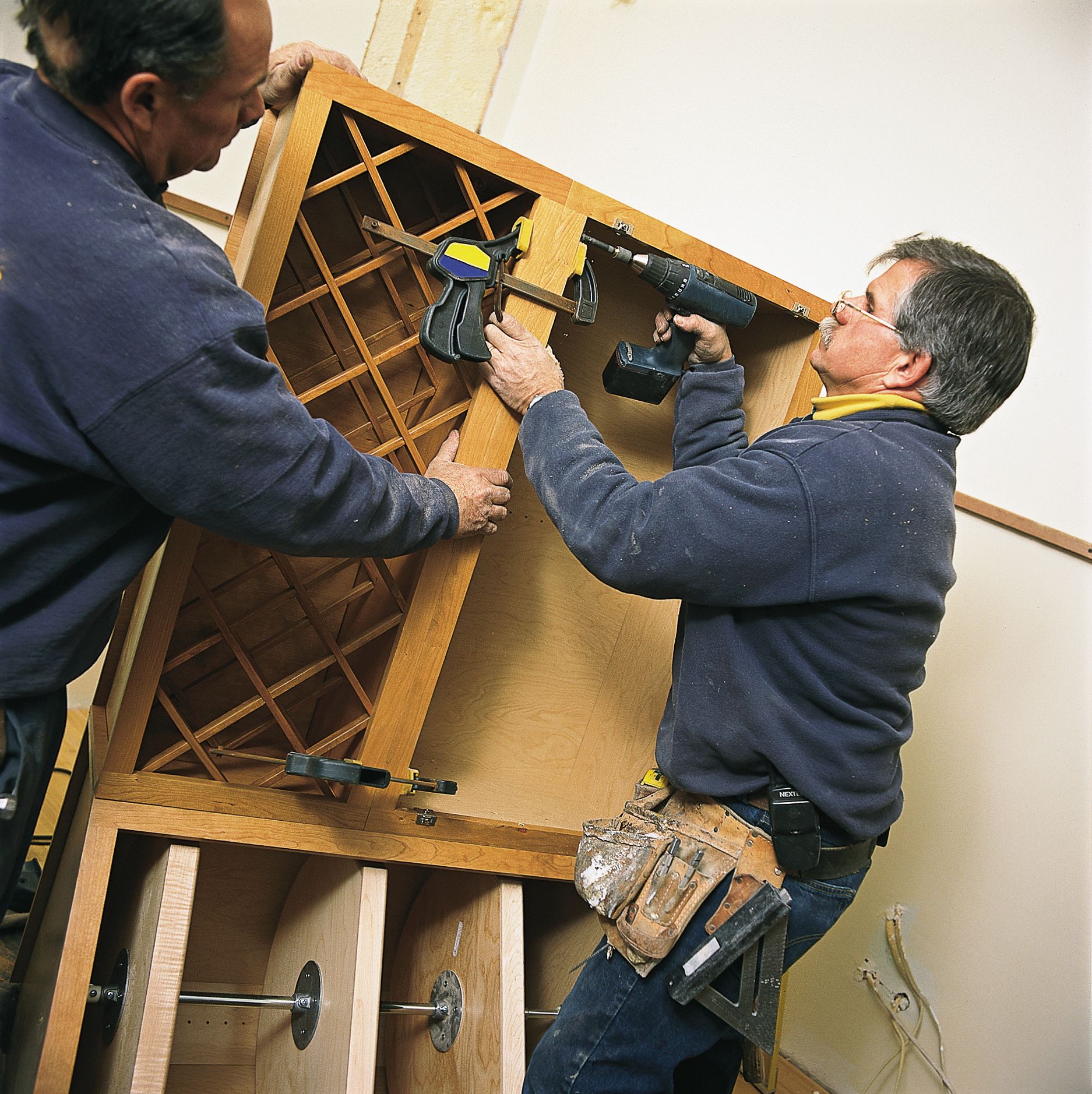
Before hanging the upper cabinets, it’s often easier to join them on the ground. This can help avoid alignment issues and allow for easier maneuvering. Join them as follows:
- Remove doors, drawers, and shelves to lighten the cabinets and label them for easy reassembly.
- Install a straight 1-by-3-inch cleat along the upper cabinet layout line, securing it to the studs.
- Align the face frames of adjacent cabinets on the floor and clamp them together.
- Check for flush alignment with a straightedge.
- Drill pilot holes and join the cabinets with 2-inch screws.
Hang the Upper Cabinets

With the upper cabinets joined, it’s time to hang them on the wall. Lifting and securing upper cabinets can be a cumbersome task, so having additional hands to help can make a significant difference. Follow these steps:
- With helpers, lift the cabinet assembly into place, resting it on the installed cleat.
- Check for plumb with a level and adjust as necessary using shims.
- Secure the cabinets to the studs using 2½-inch deck screws with washers.
- Continue hanging the remaining cabinets, making sure they’re flush with those already installed.
- Shim and secure each cabinet as you go, maintaining level and plumb throughout.
Install the Corner Base Cabinet
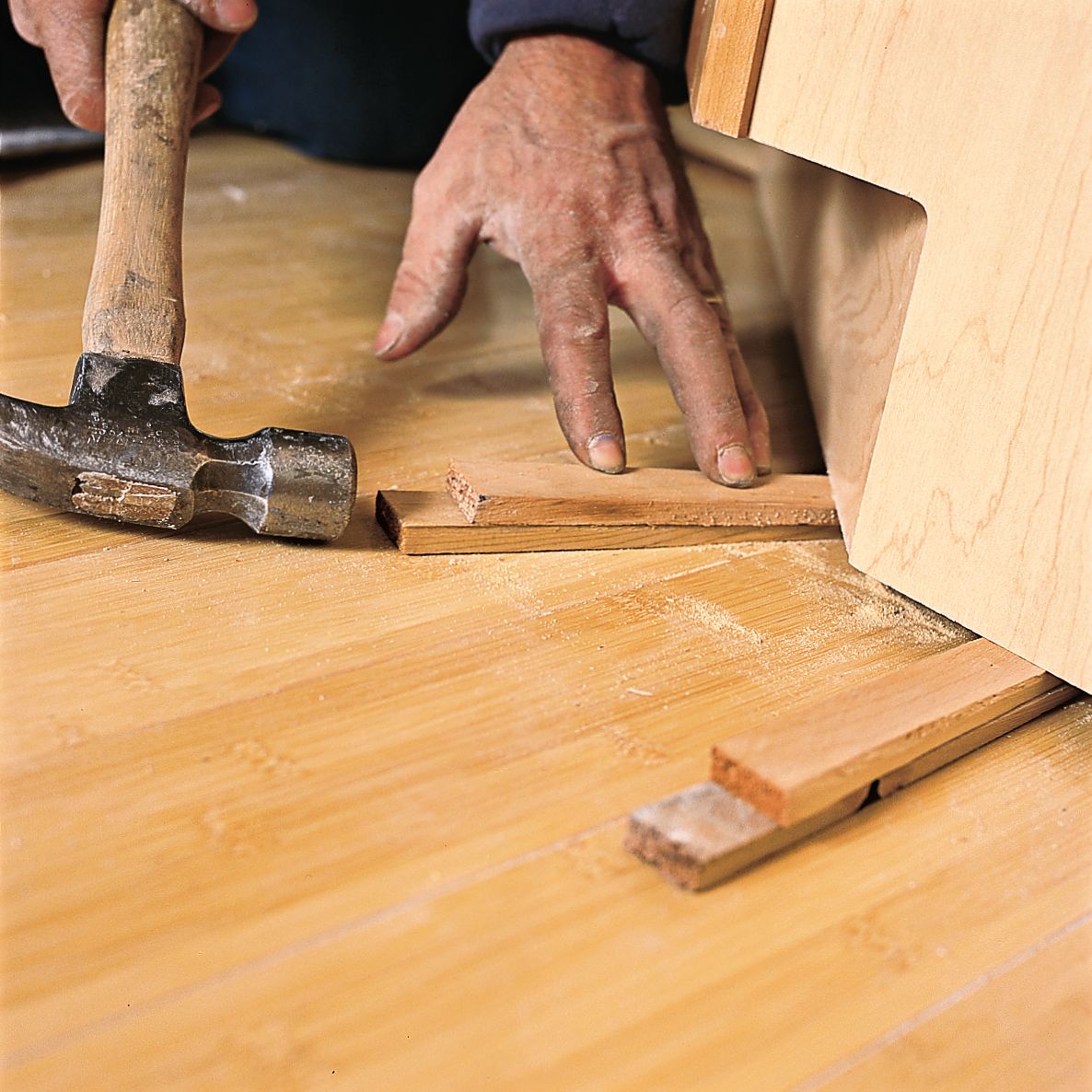
The corner base cabinet serves as the anchor point for your base cabinet installation. Misplacement at this stage can cause misalignments for the rest of your base cabinets. Here’s how to install the corner base cabinet:
- Position the corner cabinet and shim it to meet the layout line.
- Mark and cut holes for any plumbing lines if necessary.
- Check for plumb and level, adjusting shims as needed.
- Secure the cabinet to the wall studs and floor once properly positioned.
Install Remaining Base Cabinets
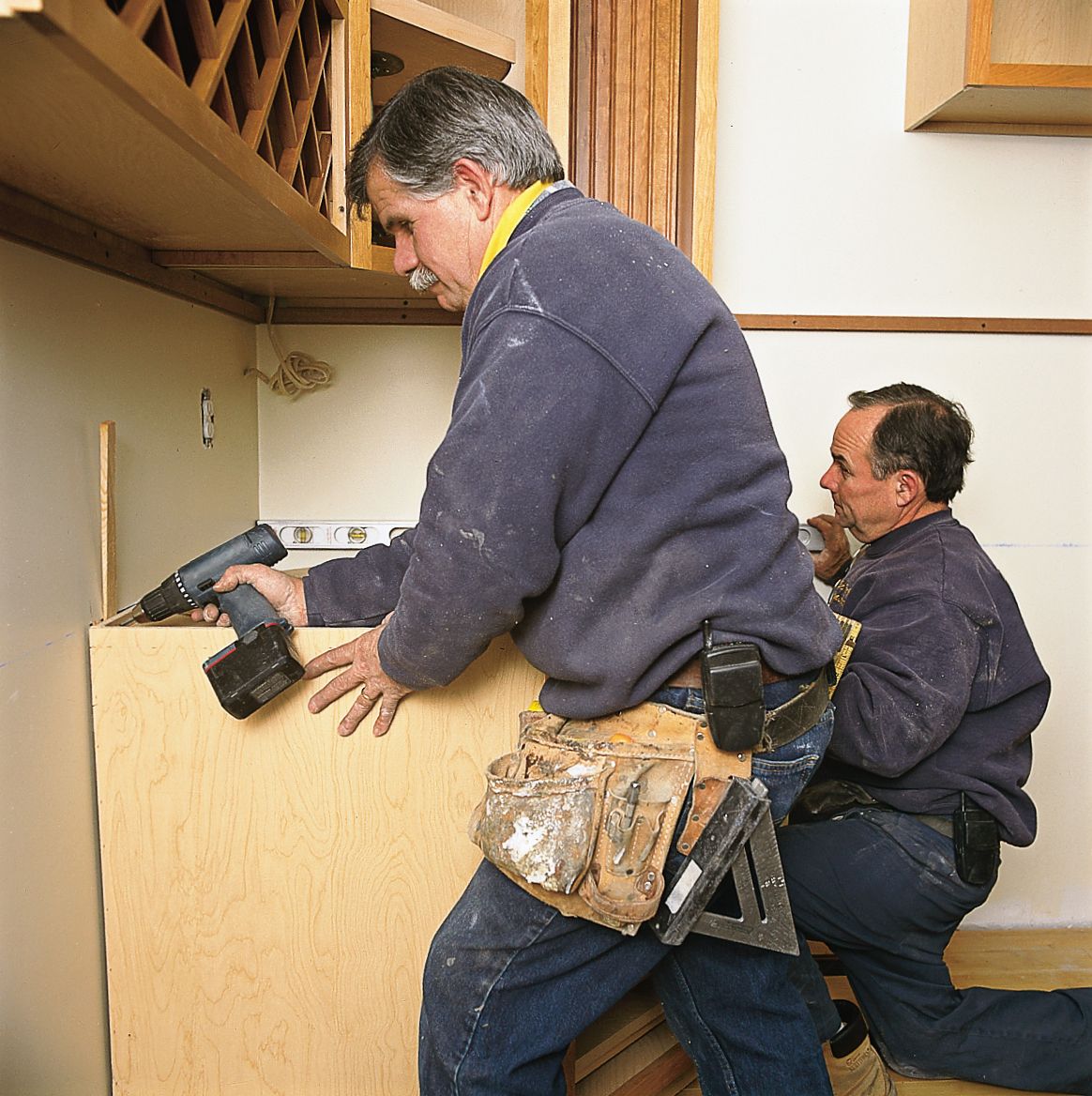
With the corner cabinet in place, you can now install the remaining base cabinets with these steps:
- Work outward from the corner cabinet, shimming and leveling each cabinet as you go.
- Make sure face frames are flush with adjacent cabinets before securing them.
- Clamp cabinets together and join them using screws through the face frames.
- Secure each cabinet to the wall studs and floor through shims.
- Scribe end cabinets to the wall if necessary to eliminate gaps.
Replace Doors and Install Toekick
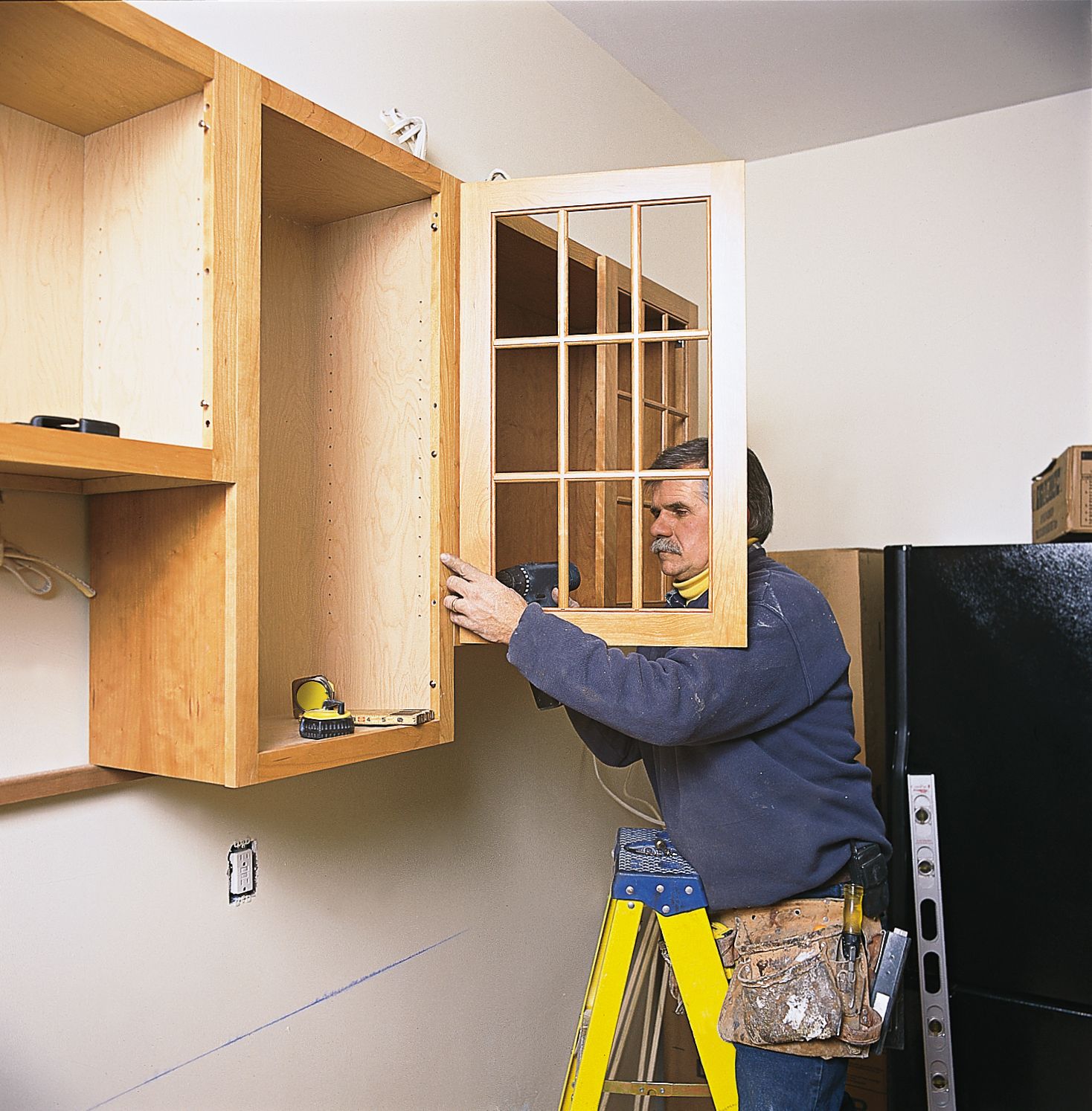
The final steps involve reinstalling doors and adding the toekick and any crown molding. Follow these steps:
- Reinstall the cabinet doors and adjust the hinges for proper alignment.
- Install the toekick trim using 1-inch brads, fitting longer pieces first.
- Scribe or add shoe molding to cover any gaps between the floor and toekick.
- If using crown molding, install it above the upper cabinets, mitering corners as needed.
- Fill nail holes with wood putty or color-matched wax sticks.
Finishing Touches
After the main installation is complete, here are a few additional steps to make sure your kitchen cabinets look and function their best:
- Install any pull-out shelves or organizers inside the cabinets.
- Add cabinet hardware such as knobs and pulls.
- Touch up any scratches or dings that may have occurred during installation.
- Clean the cabinets thoroughly to remove any dust or debris.
Troubleshooting Common Issues
Even with careful planning and execution, you may encounter some challenges during installation. Here are some common issues and solutions:
- Crooked cabinets: Check if the cabinets or the floors are uneven. Additional shims might be required to correct stubborn issues.
- Gaps between cabinets and walls: Fill small gaps with caulk or cover larger gaps with molding.
- Hardware misalignment: Double-check measurements and use a hardware jig for consistent placements.
- Misaligned doors: Adjust hinges or add magnetic catches for proper closure.
- Uneven walls: Use shims to create a level surface for cabinet mounting.
Our Conclusion
Hanging kitchen cabinets is a challenging but rewarding DIY project that can dramatically improve your kitchen’s functionality and appearance. By following these steps, you can achieve professional-looking results. Prioritize safety, use the right tools, and don’t hesitate to seek help for heavy lifting or complex installations.
